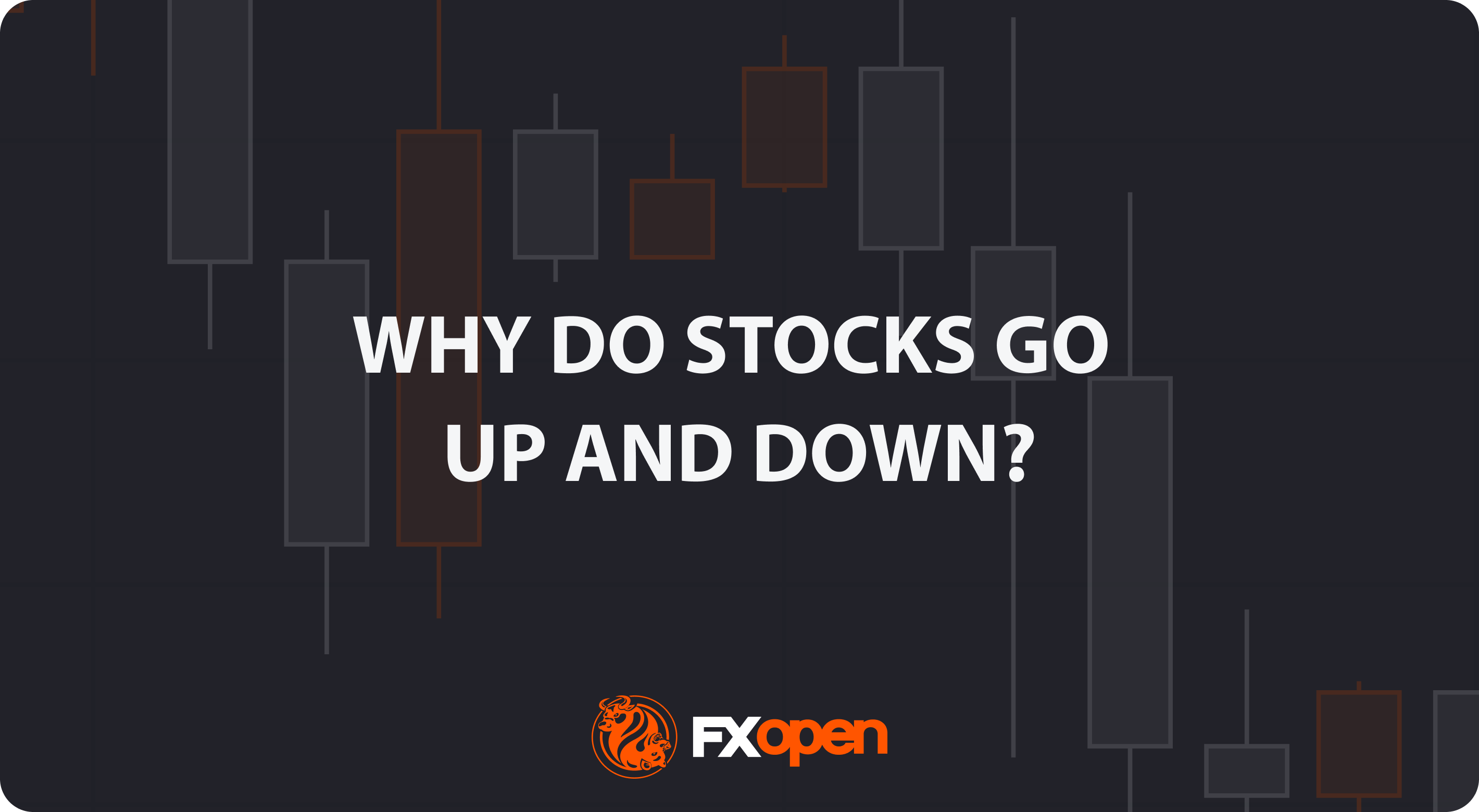FXOpen

Forex scalping stands as a prominent strategy among traders seeking to capitalise on minor price changes in the forex market. It’s an approach requiring precision, swift decision-making, and an in-depth understanding of market indicators. In this FXOpen article, we’ll explore how to use scalping in forex markets, discussing its nuances, psychological aspects, and a forex scalping strategy example.
Scalping Forex: Definition
Scalping is a rapid-fire trading strategy where traders, known as scalpers, aim to achieve small returns from minor price changes in financial markets. Scalping in forex trading is characterised by its high pace and frequent transactions, with scalpers often executing dozens of trades in a single session.
Unlike longer-term strategies that seek substantial moves in currency pairs, scalping in forex means taking advantage of quick market movements, entering and exiting trades within minutes, or even seconds, to capture small price shifts. To make it worthwhile, scalpers employ significant leverage, magnifying both potential returns and risks. Given its demands, forex scalping is best suited for those who can dedicate the time, attention, and discipline to monitor the markets closely and act without hesitation.
Characteristics of Forex Scalping
Forex scalping is a nuanced and dynamic trading strategy, demanding a specific set of conditions and tools for it to be effective. Understanding these characteristics can significantly impact a trader's ability to take advantage of quick price movements in the FX market.
High Volume of Trades
FX scalping involves executing a high number of trades to accumulate small returns that add up over time. The sheer volume of transactions distinguishes this strategy from other forms of trading, necessitating a robust system for rapid decision-making and precision.
Liquidity
Given the high volume of trades, the liquidity of currency pairs and the time of day are crucial for scalpers. Highly liquid pairs, such as EUR/USD or USD/JPY, allow for potentially tighter spreads and less slippage, which may help traders minimise the cost of each trade. Scalpers often prefer trading during peak hours when liquidity is highest, such as the overlap of the London and New York sessions.
Timeframes
Scalpers operate on very short timeframes, often looking at charts that range from one minute to five minutes. This granularity allows them to identify the minor price movements that are invisible on higher timeframes.
Need for a Strict System
Given the fast-paced nature of FX scalping, having a strict trading system in place is essential. This system helps in making quick, disciplined decisions without being swayed by emotions.
Speed and Precision
Speed and precision in executing trades are paramount, where even a few seconds’ delay can impact the trade outcome. Automated trading software has become a vital tool for deploying forex scalping systems, providing the efficiency needed to trade at this intensity.
Trading Costs
Due to the high volume of trades, costs can accumulate quickly. Many scalpers opt to trade with an ECN broker to gain direct access to market participants and more liquid conditions. This allows them to take advantage of lower spreads and better execution speeds, crucial factors that can make or break the effectiveness of a forex scalping strategy.
Scalping Trading Psychology
The psychology behind scalping in forex trading is as intricate as the strategy itself, demanding a unique set of mental attributes. Scalpers must possess an exceptional level of focus and discipline, as the fast-paced nature of this trading method requires constant attention to the markets and an ability to act swiftly on trading signals.
Emotional resilience is paramount; scalpers frequently encounter both small gains and losses, necessitating a cool head to maintain consistency and not deviate from their strategy under pressure. Adaptability is also crucial, as scalpers must be able to adjust their strategies in real-time to fluctuating market conditions.
Quick decision-making is a cornerstone of scalping trading psychology. There's little room for hesitation; a delay of a few seconds can significantly alter the outcome of a trade. This necessitates a high level of confidence in one's trading decisions and the discipline to stick to a predetermined trading plan, resisting the urge to overtrade or chase losses.
Mastery of these psychological aspects can enhance a trader's capability to execute a forex scalping strategy effectively.
Common Forex Scalping Indicators
Forex scalping techniques rely on precise tools to identify entry and exit points quickly. Let’s take a look at some of the most commonly used indicators by scalpers.
Moving Averages
Moving averages are fundamental in identifying the direction of the trend. Scalpers prefer to combine short-period moving averages with medium-term MAs to pinpoint potential entry and exit points based on the crossovers of these averages or their position relative to the price.
RSI (Relative Strength Index)
The RSI is a well-known momentum oscillator that’s used to evaluate the speed and change of market movements. Scalpers use the RSI to identify overbought or oversold conditions. A reading above 70 indicates overbought conditions, suggesting a potential sell signal, while a reading below 30 indicates oversold conditions, suggesting a potential buy signal.
Stochastic Oscillator
The Stochastic Oscillator defines the strength of a price, which helps traders determine price reversals. Scalpers look for overbought or oversold signals similar to the RSI, with levels above 80 indicating overbought and below 20 indicating oversold, potentially signalling reversals.
Bollinger Bands
Bollinger Bands measure market volatility and provide a dynamic range within which the price moves. Scalpers may look for price touches or breaches of the bands as signals for potential reversals or continuation of the trend.
While these indicators are powerful tools, the key to effective scalping is not to analyse too many at once. Instead, the theory states that it’s best to find an indicator or a combination that the trader understands well and can use to create a replicable system. Mastery of a few indicators is far more valuable than a superficial understanding of many.
To explore the world of trading indicators and find the one that suits you best, head over to FXOpen’s free TickTrader platform to get started with over 1,200+ trading tools.
Example of a Forex Scalping Strategy
Using forex trading scalping strategies requires a deep understanding of market trends and an ability to react swiftly to the constant flow of information. Scalpers typically rely on technical analysis and real-time data to make their trading decisions.
In this strategy, the 1-minute timeframe on GBP/USD during the overlap of the London-New York session serves as the trading window. The setup includes a 50-period EMA (Exponential Moving Average) in blue to determine the overall trend, and a 12-period EMA in orange for interpretation of more immediate price action.
Interested readers can uncover more detailed scalping strategies in our articles ‘Ultra-Fast Scalping Strategies in Forex’ and ‘Three of the Most Prominent Scalping Strategies in Forex.’
Trend Determination
The trend is identified by the slope of the 50-period EMA. A downward slope with the price below this EMA suggests a bearish trend, whereas an upward slope with the price above indicates bullish conditions. A flat EMA with price fluctuating around it signals a lack of clear trend, meaning the trader might wait for a more definitive market direction.
Entry Criteria
With a bearish trend identified in this example, the focus shifts to entering on pullbacks. This is where the Stochastic Oscillator comes into play, specifically when it (blue line) crosses above the 80 mark, indicating potential for a reversal. The trader then looks for the price to rise above the 12-period EMA and subsequently close below it alongside the Stochastic declining, signalling a potential entry point.
Exit Criteria
Stop loss placement is crucial. They may set just beyond a recent swing point, the 50-period EMA, or even a set amount of pips based on the market’s Average True Range (ATR). It’s important to add the spread to avoid premature stop-outs on these lower timeframes.
Profits could be considered at the nearest significant low, a predetermined risk/reward target, or by trailing a tight stop to capitalise on further downward movement.
This strategy is simple and easily customisable. For instance, entry could be sought when the Stochastic closes below 80 or begins to decline below its moving average (black line). The best results will come from a strategy that you’ve backtested and know to work—a key factor in building confidence around your forex scalping strategy.
The Bottom Line
Embarking on the journey of forex scalping unveils a world of fast-paced trading that demands keen attention and discipline. With the right broker and a solid strategy, the potential for quick, small gains becomes an exciting prospect for the adept trader. However, you should remember about risks of money loss the scalping strategy bears.
For those ready to take on the challenge, opening an FXOpen account offers a gateway to forex markets. Our ECN technology means traders can enjoy low-cost trading, tight spreads, and ultra-fast execution speeds.
FAQs
What Is Scalping in Forex?
Scalping in forex is a trading strategy focusing on making numerous small trades to potentially capture gains from short-term price movements.
What Is a Forex Scalping Strategy?
A forex scalping strategy involves using technical analysis on very short timeframes to enter and exit trades quickly, aiming for small gains.
How Does Scalping Work in Forex?
Scalping works by executing a high volume of trades that each aim for small returns, leveraging the liquidity and volatility of the forex market to capitalise on minute price changes.
How to Scalp Trade?
To scalp trade, traders typically use a tight stop-loss, trade during the most liquid market hours, and employ technical indicators to identify quick entry and exit points.
Is Forex Scalping Profitable?
Forex scalping can be potentially rewarding for traders who possess the discipline, quick decision-making skills, and the ability to meticulously manage numerous trades within a short time span. However, any trading strategy involves risks of money loss.
This article represents the opinion of the Companies operating under the FXOpen brand only. It is not to be construed as an offer, solicitation, or recommendation with respect to products and services provided by the Companies operating under the FXOpen brand, nor is it to be considered financial advice.
Stay ahead of the market!
Subscribe now to our mailing list and receive the latest market news and insights delivered directly to your inbox.








